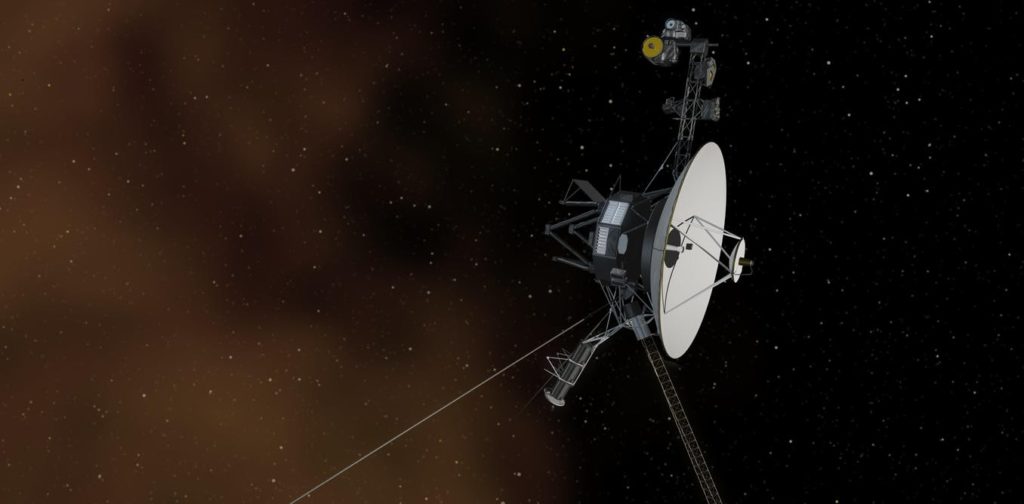NASA WARNS: Voyager 2 Has Made An IMPOSSIBLE Discovery After 45 Years!
**NASA’s Voyager 2 Discovers Dynamic Interstellar Medium After 47 Years in Space**

NASA has recently received signals from Voyager 2, a spacecraft that has traveled beyond our solar system for nearly 50 years. Launched on August 20, 1977, Voyager 2 was designed for a short mission but has far exceeded expectations, providing crucial data about our solar system and now interstellar space.
Recently, Voyager 2 made groundbreaking discoveries about the interstellar medium, the sparsely populated area filled with gas, dust, and cosmic rays that exists between stars. Contrary to previous beliefs that this region was static, data from Voyager 2 shows that the interstellar medium is much more dynamic. The spacecraft recorded unexpected fluctuations in particle density, indicating that the environment is far from uniform.
Additionally, Voyager 2 detected increased cosmic rays, suggesting it may be traversing an active region of interstellar space. These findings challenge the conventional understanding of the heliopause—the boundary where the solar wind meets the interstellar medium—revealing it to be more turbulent than previously thought.
The implications of Voyager 2’s discoveries are significant. They require scientists to reassess their models of the heliopause and interstellar medium, impacting our understanding of cosmic evolution, space weather, and future interstellar missions. The spacecraft’s long-lasting mission illustrates human ingenuity and the spirit of exploration, continuing to provide valuable data that may reshape our comprehension of the universe.
Voyager 2’s journey emphasizes that space remains full of surprises, and its ongoing operation opens new avenues for scientific inquiry and potential advancements in our exploration of the cosmos.
**Potential for Forming Complex Molecules in Space**
Scientists have long speculated that the building blocks of life, such as amino acids and other organic molecules, could form in the cold, dark regions of space. Data from Voyager 2 could help researchers determine the conditions under which these molecules could form and survive in interstellar space. Studying complex molecules in space could not only help understand the origins of life, but also have practical applications for future space exploration.
If we can identify regions of space where organic molecules are more likely to form, this could guide future missions searching for signs of life in other star systems. In addition, understanding the chemical processes that occur in interstellar space could help scientists develop new technologies for space travel, such as advanced propulsion systems or materials that are more resistant to the harsh conditions of deep space.
**Discovering Time and Space**
The findings from Voyager 2 also raise new questions about the nature of time and space at the cosmic scale. Voyager 2’s journey through interstellar space provides a unique opportunity to study how the universe changes over time. As Voyager 2 continues its journey, it will encounter new regions of space with different conditions, providing a rare glimpse into the dynamic nature of the universe.
**The Value of Long-Term Observations**
The mission also highlights the importance of patience and long-term scientific observation. Unlike many modern missions designed for short-term exploration, Voyager 2 has been collecting data for nearly five decades. This approach has allowed scientists to observe changes in the environment of the solar system and beyond over long periods of time, something that is rarely possible in the fast-paced world of space exploration.
**Survival and Scientific Breakthroughs**
One of the remarkable aspects of the Voyager 2 mission is its longevity. With technology from the 1970s, Voyager 2 was never expected to last this long. Its original mission was to explore the outer planets of the solar system, but it has continued to operate far beyond its intended lifespan. This long-term success raises important questions about the durability and design of space technology.
Voyager 2 operates with a fraction of the computing power of today’s smartphones, relying on basic systems that are by modern standards. Its persistence proves that reliability is more important than complexity in long-term missions.
**The Power Challenge**
One of the main challenges in deep space missions is power. Both Voyager 1 and 2 used decay thermoelectric generators (RTGs) to generate electricity, converting heat from the decay of plutonium 238 into electricity. These generators served well for decades, but as the plutonium decayed, the spacecraft’s power supply diminished. This posed a major concern for the continued operation of Voyager 2, as its instruments were gradually turned off to conserve energy.
**The Future of Space Exploration**
The journey of Voyager 2 was not only a technical success, but also a testament to the human spirit of exploration. As Voyager 2 plunges into interstellar space, it ushers in a new era of science, opening the door to further exploration of the universe. The spacecraft carries a golden record, a “time capsule” of sounds and images from Earth, designed to communicate the diversity of life and culture on our planet.








